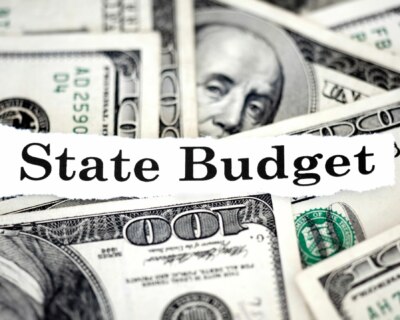Research: Looming Pension Crisis Ignored
Jindal Takes a Page from Walker’s Playbook, but Louisiana Still Trails
Despite national attention on Wisconsin and its governor’s efforts to balance the state budget and limit public employee collective bargaining, the fiscal health of its public pension and retiree health obligations went largely unnoticed. Wisconsin’s pension system has, up to now, been fully-funded.
Governor Walker proposed that state government employees increase their retirement pension and health care contributions. Governor Jindal’s 2011-2012 budget, released earlier this month, also calls for increasing public employees’ pension contribution rates for government workers.
Although Jindal is taking a page from Governor Walker’s playbook, he will need to do more. This reform addresses only one of the four pension systems and barely makes a dent in the state’s unfunded pension liability that totals over $18 billion.
The Proposed Budget
Under the proposal, Louisiana State Employees’ Retirement System (LASERS) workers would increase their contributions from 8 to 11 percent of pre-tax wages. While a pension fund should hold assets worth at least 80 percent of its total obligations, LASERS holds a mere 57.7 percent. The Governor’s proposal would increase the program’s funded ration to an only slightly better 58.3 percent – still leaving all four pension programs at a funding level of less than 61 percent.
Wisconsin versus Louisiana
According to a 2010 report from the Pew Center on the States, Wisconsin is one of only three states in the country that is a “solid performer” in managing both its pension and non-pension benefit obligations. Louisiana on the other hand, earned the lowest grade, “serious concern,” for management of its state pension obligations and “needs improvement” for its non-pension benefit obligations.
Figure 1. Wisconsin vs. Louisiana Source: The Pew Center on the States, “TheTrillion Dollar Gap: Underfunded state retirement systems and the roads to reform,” February 2010, pp. 56-57.
Source: The Pew Center on the States, “TheTrillion Dollar Gap: Underfunded state retirement systems and the roads to reform,” February 2010, pp. 56-57.
While Louisiana has done a better job of funding the pension part of these benefits over the past decade, an ominous shortfall remains. According to the State of Louisiana Comprehensive Annual Financial Report for 2010, the total unfunded liability of the state’s four public pension programs is over $18 billion. This is in addition to the state’s other post-employment benefits (OPEB) – retiree health care and life insurance – which are completely unfunded to the tune of $11.5 billion.
What Next?
While Wisconsin maintains a defined benefits approach to pensions, there is broad and growing recognition in state houses across the country that the current defined benefit approach to government retirement plans is fiscally unsustainable. Eighteen states have already adopted the defined contribution approach in their retirement systems. In addition, Louisiana’s Lottery Corporation employees participate in a defined contribution plan.
This challenge created by defined-benefit plans begs for an honest and open discussion between Louisiana lawmakers and citizens. In particular, this dialogue needs to address how we can still deliver these promised retirement benefits to government workers.
Given Louisiana’s precariously unfunded pension liabilities and lack of proposals to shore them up, a defined contribution approach warrants immediate consideration. Workers contribute a specified amount of their earnings into an individually-owned retirement account, similar to a 401(k). Defined contribution plans are not new and are widely available in the private sector. Existing workers could remain in the current program or switch to the new plan, and new workers would automatically enroll in the new plan. For taxpayers, the biggest advantage of converting to a defined contribution approach, where the state contributes a specified dollar amount to the employee’s own plan, is that the long-term costs would be predictable and transparent.
Currently, a state committee annually sets pension contribution rates, and the state contribution is now 22 percent of wages for regular employees under the state’s largest pension program. The employee contribution is 8 percent for workers hired after July 1st, 2006, and 7.5 percent for workers hired before. Since the pension system is severely underfunded (originally created as a Ponzi, pay-as-you-go system), these dramatically rising contribution rates reflect payments that are immediately required to pay benefits to current government retirees.
While the government rate has fluctuated over the past decade, it is now at its highest level. By comparison, when originally enacted the employer contribution rate was 6 percent and the employee rate was 5 percent. See Figure 2. Regardless, even with the proposed employee contribution at 11 percent, the program will remain fiscally unstable.
The program’s budget shortfalls are due to underfunding the program in past years and the program’s fundamentally flawed structure that is based on a pay-as-you-go, Ponzi scheme where today’s program participants and taxpayers pay the benefits of today’s retirees. While the state is currently facing declining revenues and continued fallout from the economic downturn, the program already faced similar difficulties in robust economic times.
Left unreformed, the prospect of benefit cuts and increases in the age of retirement eligibility loom. Concurrently, the state and its employees will face continuously increasing contributions to this doomed system.
Figure 2. LASERS Historic Agency Contribution Rates
Got Peace of Mind?
Investing in an individually-owned account will also prove less risky than reliance on an underfunded program. While federal law requires that private sector employers hold assets of at least 80 percent of promised pension benefits, state-sponsored pension programs, such as Louisiana’s, are exempt.
Additionally, willing employees can easily minimize risk by how they choose to allocate their funds. For example, most defined-contribution programs, such as the federal employee and military Thrift Savings Plan, allow workers to invest in broad stock or bond index funds. While the rate of return varies from year-to-year, investors do not face high risk.
If that is still not enough, the state could adopt a hybrid approach – a retirement benefit based on both the current approach and defined contributions, which several states have already adopted. For example, one third of the retirement contribution would fund a defined benefit payment and two-thirds of the retirement contribution would fund a defined contribution benefit payment.
Government workers may not realize that their retirement security can be impacted by political forces beyond their control. This is particularly true for newer employees. Reform can protect taxpayers and future workers from future unfunded liabilities. And government workers can enjoy an ownership stake in their retirement that cannot be altered in times of financial crisis or political turbulence.
Political Courage and Leadership
By some measures, Louisiana’s pension systems are among the worst in the nation. A pension fund should hold assets that are worth at least 80 percent of its total obligations. Yet all four of the state’s public pensions hold less than 61 percent (based on the state’s most recent financial report for 2010). When other post-employment benefits are taken into consideration the picture is even grimmer.
This crisis was decades in the making. While solutions such as defined contribution plans may be complex and difficult to achieve politically, continued inaction will perpetuate an outdated system that fails taxpayers, government employees, and future Louisiana workers alike.
American preacher and author James Freeman Clarke once wrote, “A politician thinks of the next election. A statesman, of the next generation. A politician looks for the success of his party; a statesman for that of the country. The statesman wished to steer, while the politician was satisfied to drift.” There is no doubt that the current budget battle will be intense and will require an enormous amount of political courage if we are to set a better course for the state’s future. Let’s hope that we have statesmen who are up to the task.
Naomi Lopez Bauman is a public policy consultant and a Pelican Institute adjunct fellow. She holds a B.A. in economics from Trinity University and a M.A. in government from The Johns Hopkins University. She lives in Shreveport with her husband and two children.




